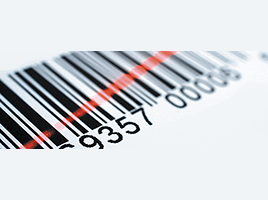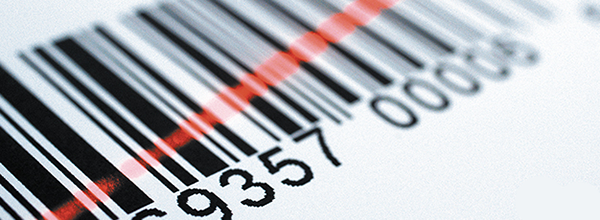
Everyone knows traceability systems trace products from farm to fork but these systems are capable of so much more.

As a food manufacturer/packager/distributor, it is your responsibility to give consumers, retailers, certification boards, and government agencies a view of the journey, all the way back to its origins. While traceability information is crucial in the event of a food-related recall or outbreak, it’s becoming more important in our customer-centric world for consumers to have confidence that both food-safety prevention and response do not get overlooked. In today’s high-speed and connected business environment, consumers and manufacturers across the supply chain can agree upon these things: the need for stronger brand protection, more awareness, and better control.
FSMA — Trust The Food On Your Plate
With the Food Safety Modernization Act (FSMA) on the horizon, traceability helps manufacturers meet the requirements for rapid and thorough tracking.The CDC estimates 48 million people per year are being affected by foodborne illnesses, making food safety of utmost importance to consumers and companies within the food industry. FSMA has become the primary driver for improved traceability in the food industry, affirming the Bioterrorism Act of 2002 — anyone playing a role in the food supply chain must identify where the product was received and to where it was shipped, so that in the event of a food-safety event, public health can be better protected. Part of the proactive stance FSMA is taking toward food safety means food manufacturers need to continue to review their own traceability capabilities. Although many companies have exceptional internal traceability controls, data often cannot be easily shared externally with partners, customers, and suppliers. FSMA is requiring food sectors to incorporate a major traceability imitative in order to meet government regulations and build relationships — giving them the ability to trust and understand what they are eating.
Manual Data Collection And Its Risk For Error
Food safety is all about prevention – recall prevention, brand reputation destruction prevention, etc. – as well as response.Beyond prevention and simply having the ability to effectively track recalled products, traceability solutions also play a key role in data collection, thus affecting the overall timeliness of your response. If your company is recording all of its production information manually and keying it into a system, there is the obvious chance for human error. Data collection with bar code scanning within the traceability solution increases the accuracy and timeliness of transactions.
For example, ABC Meat Processing is looking to find cost-savings opportunities with its traceability solution. Immediately after implementation, the company begins using data collection.Very early on, ABC Meat Processing realises it has been spending years pulling the wrong meat for a particular product.Along with using the wrong meat type, the company was sending incorrectly priced meats to consumers, costing the company a significant amount of money.With the real-time validation of information data collection provided, ABC Meat Processing was able to begin processing the correct meat, using the right ingredients to meet customer requirements.
Traceability also supports faster response times. As a spice manufacturer, your company makes spices for other food manufacturers. Your company ships a truckload of salt to several different customers. Your company has put together a small team to manually record all of the tracking and tracing information. Recording this information takes approximately half a day — for viewing, reporting, etc… With the average eight hour business day, assuming there are no meetings or other time commitments or perhaps a lunch break in the way, a half a day is approximately four hours. That puts you barely within the four hour guideline the FDA allows. With a traceability solution compiling and sorting the data for you, this same tracking and tracing information is recorded within minutes. As new government regulations, such as FSMA, are causing guidelines to tighten up, it’s crucial to report accurate tracking and tracing information within the given timeframe.
Product Recalls Are Sometimes Beyond Your Control
Let’s say all tracking and tracing is done properly and everything is being documented within your company’s traceability system.But, even with every precaution taken within your enterprise resource planning (ERP) system, sometimes things happen beyond your control that can trigger a recall. That’s where traceability becomes your best friend, providing the tools needed to track a product — or products — all the way back to square one. This allows for an effectively managed recall process and getting back to putting quality products on the shelves.
What Should I Ask Of A Traceability Solution?
Knowing what’s in food and where it comes from sounds simple enough.However, food traceability requires consistent standards and adequate technology in our evolving world. A traceability solution must be designed to trace products/lots quickly and easily. Having a graphical view of data enables easy interpretation of even the most-complex process and provides comprehensive data for all relevant areas.
With traceability implemented within your company’s ERP solution, you should be able to immediately answer these questions:
- Where are my products?
- Where, when, and in what quantities were my products produced?
- Which ingredients and processes were used to make these products?
- What quality-assurance data is available for each of my products?
- Where, when, and in what quantities were the products shipped to/from?
- Who supplied the raw ingredients and when?
- Were the raw ingredients used in any other products?
Why Upgrade From Manual Traceability?
Viewing traceability information, at both a high level and a more drilled-down version, allows you to understand the entire supply-chain process from receipt of raw materials to shipment to customers and all points in between. Selecting a traceability technology and system to manage the supply chain for food and food ingredients is an important decision. Having an effective traceability solution in place enables your business to better understand, prepare for, and exceed both regulatory compliance and customer satisfaction.

Author: Jack Payne, Vice President of Solution Consulting for Process Manufacturing at Aptean




















